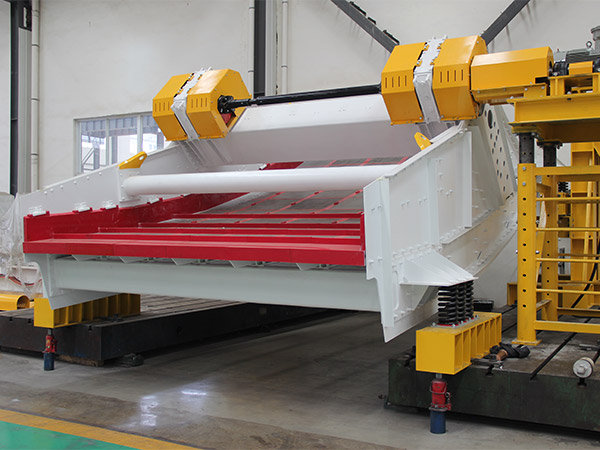The Dynamic World of Vibrating Screens: Unraveling Efficiency and Innovation
In the realm of particle separation and material processing, vibrating screens stand as indispensable workhorses. These versatile machines are pivotal in industries ranging from mining and construction to agriculture and recycling. In this technical exploration, we delve into the intricate world of vibrating screens, unraveling their structure, functionalities, and innovative advancements that drive efficiency in various applications.
I. Anatomy of a Vibrating Screen
A vibrating screen consists of several key components, each playing a vital role in the process of material separation:

- Screen Surface: The screen surface is the primary component where material separation occurs. It can be made of woven wire mesh, perforated metal, or other materials designed to suit the specific application.
- Vibrating Motor: The vibrating motor imparts vibrations to the screen surface, facilitating the movement of particles across the screen and through openings.
- Screen Box: The screen surface and vibrating motor are housed within the screen box, which provides support and containment for the vibrating assembly.
- Deck(s): Vibrating screens can have multiple decks or layers, allowing for the simultaneous separation of different particle sizes. Each deck comprises its screen surface and corresponding vibrating motor.
- Springs and Suspensions: Springs and suspensions support the screen box, allowing it to vibrate freely while absorbing excess energy. Proper suspension ensures smooth operation and longevity of the vibrating screen.
II. Functionality and Principles of Operation
Vibrating screens operate based on the principle of stratification and screening efficiency. When material is fed onto the screen surface, smaller particles pass through the openings, while larger particles are conveyed along the screen surface until they find an opening that allows them to pass through.

- Screening Efficiency: Screening efficiency is influenced by factors such as screen inclination, amplitude of vibrations, and the shape and size of openings in the screen surface. Optimal design ensures the efficient separation of particles.
- Stratification: Vibrating screens promote stratification, where smaller particles settle to the bottom of the material layer and larger particles rise to the top. This stratification allows for precise separation of particles based on size and shape.
III. Types of Vibrating Screens
- Linear Vibrating Screens: Linear vibrating screens move in a straight line and are equipped with linear vibrations. They are suitable for fine particle separation and high-capacity screening applications.
- Circular Vibrating Screens: Circular vibrating screens have circular motions and are effective for screening medium to coarse-grained materials. They are versatile and widely used in various industries.
- High-Frequency Vibrating Screens: High-frequency vibrating screens operate at higher frequencies, allowing for finer particle separation. They are particularly useful in applications requiring high efficiency and precision.

IV. Innovative Advancements
- Modular Design: Vibrating screens with modular design allow for easy replacement and customization of components, enhancing maintenance efficiency and adaptability.
- Screen Media Technology: Advanced screen media technologies, including polyurethane, rubber, and woven wire, improve wear resistance, durability, and screening efficiency.
- Smart Screening Solutions: Integration of sensors and automation technologies enables real-time monitoring of screen performance, facilitating predictive maintenance and process optimization.
Conclusion
Vibrating screens are the unsung heroes of material processing, playing a pivotal role in countless industries. Through their diverse designs and innovative advancements, they continue to redefine efficiency and precision in particle separation. As technology evolves, so too will these essential machines, ensuring that industries around the world can continue to rely on vibrating screens for their material processing needs.


